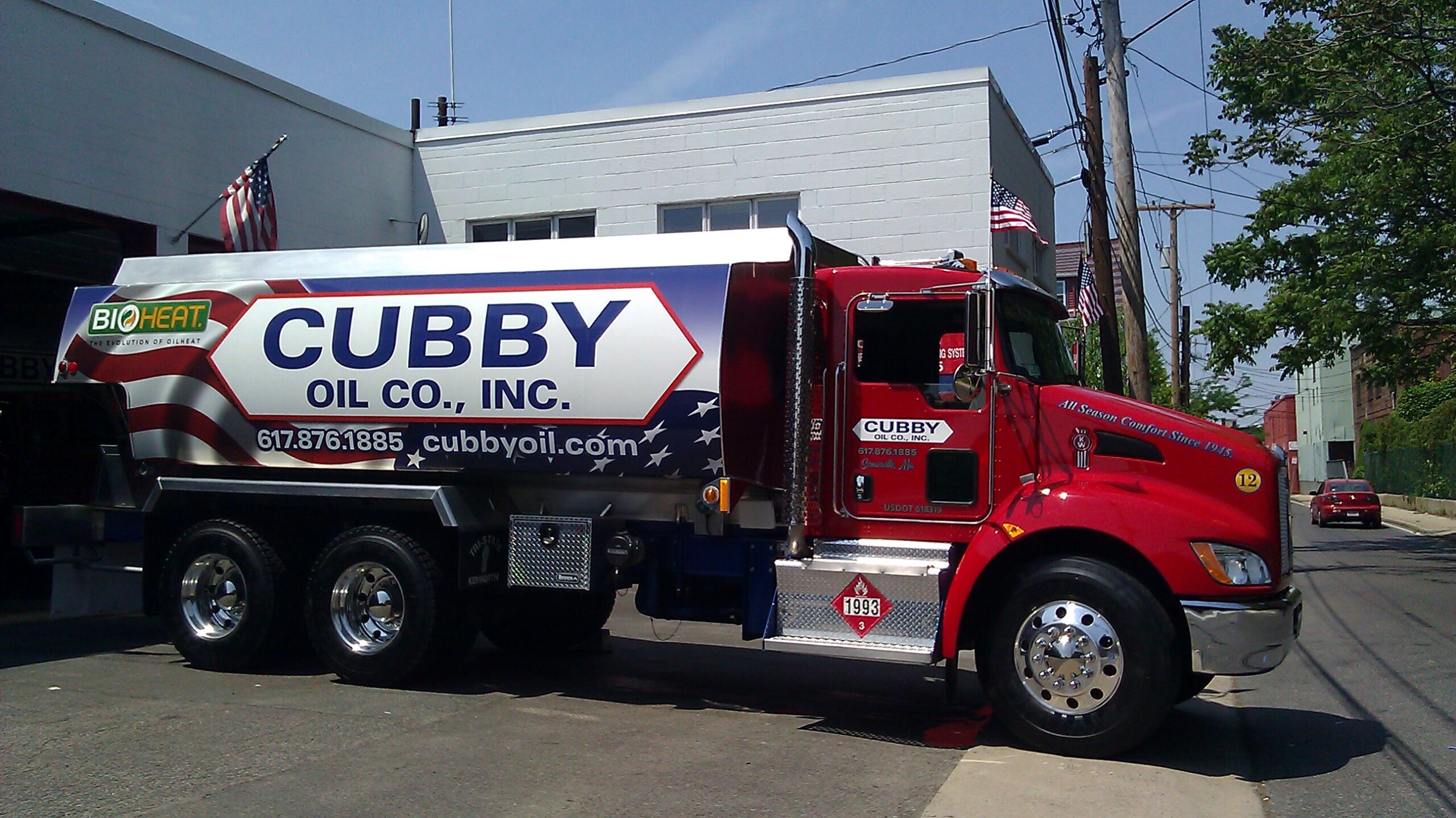Bioheat fuel offers exceptional heating and significantly reduces greenhouse gas emissions.
 There’s no warmth like that from heating oil, whose flame burns hundreds of degrees hotter than natural gas or propane. But as federal, state and local governments fervently move forward enacting their (electrify-everything) climate agenda, the proverbial heat is on the oilheat sector to decarbonize.
There’s no warmth like that from heating oil, whose flame burns hundreds of degrees hotter than natural gas or propane. But as federal, state and local governments fervently move forward enacting their (electrify-everything) climate agenda, the proverbial heat is on the oilheat sector to decarbonize.
“Our industry is faced with absolute extinction,” says Charlie Uglietto, owner of Cubby Oil & Energy, a heating-oil dealer servicing greater Boston. “There are people who want to end fossil fuels and put me out of business.”
Uglietto’s father started the company in 1945. As times changed, the company began converting coal furnaces to heating oil. Today, Cubby Oil has 7,500 residential and commercial accounts.
Just like coal transitioned to heating oil, Uglietto was introduced to the future of heating oil in the mid-2000s by Paul Nazzaro, president of Advanced Fuel Solutions and longtime supply-chain adviser for Clean Fuels Alliance America (formerly the National Biodiesel Board).
Nearly 20 years ago, Nazzaro asked a simple question no one else had: If biodiesel was so great for diesel vehicles, then why not for heating oil, too?
Bioheat fuel was born thanks to Nazzaro and support from Clean Fuels, the National Oilheat Research Alliance (NORA) and funding from the United Soybean Board and Qualified State Soybean Boards (QSSB) including the Nebraska Soybean Board and Missouri Soybean Merchandising Council (MSMC).
“We need to recognize the human factor of Bioheat fuel,” Nazzaro says. “Bioheat enables family businesses that rely upon liquid fuels to sustain their businesses.”
The vision for Bioheat fuel began small — 2% blends of biodiesel in heating oil, then 5% — but for the then-nascent biodiesel industry, this was huge.
Then there was a shakeup in how society viewed climate change, the carbon intensity of fossil fuels and the threat of greenhouse gases (GHG). Biodiesel has always been a low-carbon fuel, but the primary reasons for its growing popularity shifted.
In biodiesel’s early days, the major drivers were American energy independence and security, improving air quality in urban environments, job creation in rural communities and boosting depressed commodity markets by utilizing excess soybean oil.
 As the climate movement took hold, however, people demanded less carbon-intense fuels than petroleum. Natural gas, a fossil fuel marketed as a “clean alternative,” gained market share in home heating. But with biodiesel’s ability to reduce lifecycle GHG emissions between 57% and 86%, a new and compelling purpose for biodiesel and Bioheat fuel was developed.
As the climate movement took hold, however, people demanded less carbon-intense fuels than petroleum. Natural gas, a fossil fuel marketed as a “clean alternative,” gained market share in home heating. But with biodiesel’s ability to reduce lifecycle GHG emissions between 57% and 86%, a new and compelling purpose for biodiesel and Bioheat fuel was developed.
Low-level blends like B5, however, couldn’t achieve the carbon reductions needed, so industry goal posts were moved. Over the years, higher blends like B20 have been thoroughly tested, approved and more widely adopted.
B20 is now considered a drop-in fuel for legacy oilheat systems. The fuel specification for B20 heating oil has long been a part of ASTM D396.
“At NORA, B20 is a fait accompli,” says Michael Devine, a longtime Bioheat fuel advocate and president of NORA. “All major burner manufacturers warranty B20 blends. We’re focusing now on B50 blends and B100.”
Bioheat Super Plus blends of B50 and B100 are the future of oilheat. NORA has created developmental fuel specifications for both, and it is conducting B100 field tests to see what adjustments, if any, are needed. The industry is also working with UL on a burner protocol for B0 to B100.
“Voting just opened,” Devine says. “If this is successful, that’ll be significant.”
Through initiatives like the Providence Resolution, Northeast oilheat associations have committed to reducing GHG emissions from heating oil 15% by 2023 (B20), 40% by 2030 (B50), and to become net-zero by 2050 (B100). Furthermore, many Northeastern states have programs encouraging or requiring varying levels of Bioheat fuel.
“Thanks to efforts over the past 15-plus years, the heating-oil industry can meet the moment and decarbonize,” Devine says. “This is trickier for natural gas and propane.”
In an entirely progressive move, Cubby Oil only delivers B50 to its 7,500 customers. The handful that didn’t want it were advised to find another fuel dealer.
“We started at B5, then B10, B20, B30, B40 and eventually B50,” Uglietto says. “We did a two-winter test with NORA and 16 B50 users. Six times a year, NORA teams sampled fuel and pulled burner heads. We became convinced immediately it wasn’t a problem.”
Cubby Oil has a few hundred customers with outside tanks. Biodiesel typically has higher cloud and pour points than petro-diesel. So, for B50 blends in outdoor tanks, preventative action must be taken.
“AFS designed an additive that drops the pour point of my B50 down to minus 30-degrees Fahrenheit,” Uglietto says. “Secondly, in smaller nozzles there may be an issue with biodiesel’s viscosity — it’s a little thicker than heating oil. In those few cases, we increase the fuel-pump pressure to get better atomization. That typically solves the problem.” If it doesn’t, Carlin offers a nozzle-line heater.
Over the years, some have suggested cad cells may not detect Bioheat’s lighter-colored flame and will shut down the system. “We’ve not noticed any problems with this,” Uglietto says.
While a few alterations were made for a small number of Cubby Oil’s residential customers migrating to B50, none of his customers with big commercial burners had issues.
“What we’ve done since 2008 has had a big impact for our customers,” Uglietto says of adopting Bioheat fuel. “Our industry can’t move without this piece. This keeps us in the discussions.”
As the climate movement matured, the push to electrify everything has strengthened. The market-erosion threat to heating oil today is electric heat pumps.
Bioheat fuel provides immediate GHG reductions, which is important as the “time value of carbon” becomes more understood. A ton of carbon avoided today is worth more than a ton tomorrow because of how carbon emissions accumulate in the atmosphere.
“It’s a pour-and-go fuel,” Nazzaro says. “The government wants heat pumps in everyone’s homes, but there are 25,000 reasons to stay with Bioheat fuel,” he says, referring to the average cost of heat-pump installation.
Uglietto uses B100 in his own system and says soy Bioheat fuel is the most prevalent variety available in the Northeast. “I prefer it,” he says.
Midwest soybean farmers and Northeast heating-oil dealers have much in common, such as multigenerational family operations and being dependent on the weather.
“Both have to be really smart in those things they can’t control, which make up most of their business,” Devine says. “They both understand their business front to back and have deeper relationships with people they do business with.”
Uglietto extends great thanks to Midwest farmers for their support. “They had faith to invest in our industry before we saw the light,” he says. “We look forward to collaborating well into the future.”
Nazzaro says, “Through the generosity of QSSBs, they continue to invest in getting Bioheat fuel totally embedded in the liquid fuel supply chain.”
If California is the largest market for renewable fuels, then the Northeast Bioheat market is quickly evolving into the second largest. “Feedstock here is not scored like it is in California,” Devine says. “There’s a more level playing field for soybean oil to compete.”
In an annual market between 5 billion and 6 billion gallons heavily concentrated in the Northeast, the opportunity is enormous.
Northeast fuel dealers don’t just want biodiesel, they need it. “Without it, I don’t have a future,” Uglietto says. “I don’t want to leave my boys without a future. The only thing that keeps us at the table is biodiesel.”


